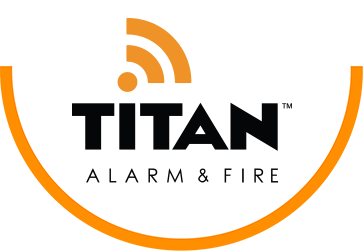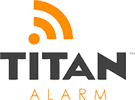[three_fourth_last]
“Smart” technology, or technology with advanced automated features, is greatly changing the way we live in our homes. Various aspects of our homes can now be easily and intelligently automated: security systems, thermostats and even lighting.
There are many benefits to adding smart home technology to a home. While some solutions may cost more than others, the benefits can outweigh any initial expenses.
 Convenience
Convenience
Home automation technology makes it easier to do things such as turn on and off lights when away from home at prescheduled times. You can also control home security features, including alarm systems, smoke or carbon monoxide detectors, door and window sensors, locks and security cameras. Smart home technology also extends to features such as streaming audio and video around your home — this format bypasses physical media’s limitations. Other smart home features controllable through automation technology include heating and cooling systems, electrical outlets, sprinklers and thermostats.
All of these features can usually be controlled through mobile devices and sometimes voice control.
 Cost Savings
Cost Savings
The use of technology can save money on energy. One way is through setting up automatic lighting that activates itself based on the time of day. Another way is through smart thermostats that can adjust themselves based on whether someone is home. A few smart devices can also sync up with real time energy information, an ability that enables such features as a dishwasher running only at times of day when energy savings would be cheapest.
 Home Security
Home Security
The FBI reports that in 2010, there were an estimated 2.2 million burglaries. Out of these, 60.5% involved forced entry.
Smart home security systems allow easy access away from home. Some systems will even alert a homeowner to unusual movements within their home via phone, text or email.
Depending on the type, home security systems can also alert you as to whether your home has suffered damage from fire, weather and other disasters.

Other security features include the ability to let children into a home without the need for a parent present. Smart home systems can automatically unlock doors, allowing children coming home from school into a house. They can then follow up this feat by sending you an alert. This process avoids the need for duplicating house keys.
Smart Thermostats
One piece of smart home technology that’s become prominent is the smart thermostat. At one time, thermostats were largely mechanical, without any features besides setting the temperature. Today’s smart thermostats offer a range of features.
One of the features of smart thermostats is programmability. It’s possible to program smart thermostats to turn heating or air conditioning on or off based on the time of day. But they can also activate based on ambient conditions other than the temperature, such as the humidity.
Many smart thermostats also can “learn” from users, and thus program themselves to know when to activate and for how long.
There’s a range of popular smart thermostats. One high-quality option is the Alarm.com Smart Thermostat. This thermostat offers a range of features, including:
- A clear display for temperature settings
- The ability to sense other smart devices, such as doors, windows and security alarms. This lets the thermostat adjust its settings automatically.
- Built-in wi-fi, which allows the thermostat to interact with other devices
- The ability to use Alarm.com’s Geo-Services — location-based rules that allow the thermostat to adjust its own temperature settings automatically
- Settings controllable through an Energy Management Solution app, available for mobile devices
Automated Lighting

Automated lighting is another smart home feature. Similar to the smart thermostats above, automated lighting lets you perform tricks such as automatically turning home lights on and off while away from home or activating the same lights with motion detectors. One possible seasonal usage is to automatically control when and how Christmas light displays are activated. Automated lighting is also useful for vacations, as they make it appear that someone’s at home.
Several automated lighting devices are available. Among the devices: D-Link’s Wi-Fi Smart Plugs, Belkin’s WeMo Home Light Switch and Alarm.com’s Intelligent Lighting system.
Alarm.com’s system provides the ability to control lights away from home, no matter how far, through the use of Alarm.com’s systems management app. The lighting system can be set to automate at varying pre-scheduled intervals, to avoid any patterns obvious to those outside your house. The Intelligent Lighting system can also be set to activate your house’s lights at a regular pre-scheduled time, such as sunset.
Smart Home Media
Streaming media is also a benefit of smart home technology. No longer do you need to access physical media such as CDs, DVDs or photo albums — such services are accessible through digital media services.
Today’s smart home media can be accessed using streaming devices that work with your mobile devices. One popular streaming media device is the Roku. Roku offers several options of streaming devices, from boxes that attach to your TV to a simple stick the size of a flash drive. Once attached to your TV, a setup guide lets you create a Roku account. You can then install a choice of “channels” for various streaming services, such as Netflix, Amazon Video or Hulu.
Another popular streaming device is the Google Chromecast. A flash-drive-sized dongle, the Chromecast, attaches to an HDMI port on your TV set and is operated through your smartphone or tablet. In addition to replacing a clunky remote, the Chromecast app on your devices can also relay whatever your device is playing to your TV, allowing you to easily switch between your mobile device or TV.
A third device is the Apple TV, which offers streaming functionality similar to the devices above. However, while it comes with a remote, its mobile device compatibility is limited to iOS devices such as the iPhone or iPad.
Another home streaming option for more technically inclined enthusiasts is the Plex media server. Plex is easily configurable media server software that, when installed on a computer, can allow you to stream any digital media files — including movies, photos and music — it finds to a compatible device. Plex can also pull in information from external online sources about the media played, including displaying its DVD or CD cover art. Plex offers apps for iOS and Android, and also offers support for Rokus and Chromecasts.
However, Plex doesn’t work with media files using digital rights management (DRM), such as movies or TV shows sold via iTunes, Amazon or Google Play.
Security Alarm Systems
Smart home security is one of the most popular applications for smart device technology. Like the above smart home items, you can control home security devices from any mobile device.
Popular smart home security systems such as Alarm.com’s system offer a wide range of standard features. One feature offered by Alarm.com’s smart home security system includes the use of secure cellular connections for communications, which ensures the system will function even in homes without a dedicated landline telephone.
Alarm.com’s system also offers battery backup, ensuring the system will work even during a power failure. As expected for smart security systems, 24/7 service is included to provide round-the-clock emergency response coverage.
The Alarm.com smart home security system also can be controlled through a mobile device app, with apps available for Android, iOS or Windows Phone devices — a mobile-formatted website can also be used with a browser. The system also ties into other systems, including carbon monoxide and smoke detectors, surveillance video cameras and flood detection.
While some people haven’t yet started using smartphones, some of the advantages of using a mobile device for smart home security systems include:
- Easy access to home security systems without finding a computer or carrying another device. You’ll also avoid any uncertainty that you’ve activated security before leaving home, as it’s easy to view security system logs at any time.
- Smart home security cameras can feed their live video directly to your mobile device. This makes it easy to check in on children or pets when you’re not at home.
- Controlling system settings remotely. One example of a benefit: You can turn up heating systems’ temperature in case of an unexpected cold snap and avoid coming home to an excessively cold house.
- Receiving email or text message alerts.
- Receiving severe weather alerts, which might be useful if you are on vacation or otherwise far away from home.
Installing Home Security Systems
When it comes to setting up a home security system, there are two options: install it yourself or have it professionally installed.
The advantages of doing it yourself include:
- You will save more money.
- The process is possibly more convenient and faster than scheduling a time for a professional to visit your home and install a system.
- Many systems make it simple to install smart home security items.
The advantages of a professional installation include:
- You know a professional will set everything up correctly, without any guesswork.
- Some equipment purchases might be cheaper if done through a security company.
- You’ll have a professional to call in case something goes wrong.
Securing Home Security Systems
While smart home technology is highly useful, it carries with it the same concerns as any other type of tech: the need to keep it secured. Security means to employ include:
Strong Passwords
Some devices require the use of a password upon setup. Like other online accounts, this should follow secure password advice. Never reuse the same password for any device. Make sure the password isn’t easily guessable by avoiding common or popular words such as “password,” “12345,” “Superman,” or “Chicago.” A good password should be at least 12 to 16 characters long, and use a mix of upper- and lower-case letters, numbers and punctuation.

Firewalls
You should use your smart home devices behind a firewall. Fortunately, most routers that control home networking and Wi-Fi should have a firewall activated by default. For those technically inclined, devices such as IP security cameras should be kept behind a firewall, but with port forwarding configured so they can be accessed externally as needed.
Update Firmware
Even if the device doesn’t prompt you to do so, you should consider updating its firmware. You can go to the device manufacturer’s website to see if they offer any newer firmware versions as well as instructions for how to update the device.
Use Your Own Virtual Private Network (VPN)
You can use your own virtual private network (VPN) to increase security for all your smart home devices. VPNs allow you to securely access devices from outside your home. This is advised for more technically advanced users. Some companies offer a VPN service, though it’s possible to create your own VPN at home.
Keeping Your Home Network Secure
In addition to keeping smart home devices secure, you must secure your home network in general, including your router. Most of the tips above apply in this case. Making sure your router also uses strong encryption (WPA/WPA2, not WEP) is also advised.
Backup Power
It might be worthwhile to use a secondary backup power supply for your home security system, in case of a power failure.
Smart home technology offers many benefits for home users. It can save money, offer a range of features and enhance home security. While it requires an initial setup cost and effort, the benefits can make smart home technology well worthwhile.
If you want to learn more about an automated home security system or the installation process, please contact Titan Alarm today for more information!
Updated by Titan Alarm on November 5, 2018.


















 Convenience
Convenience







